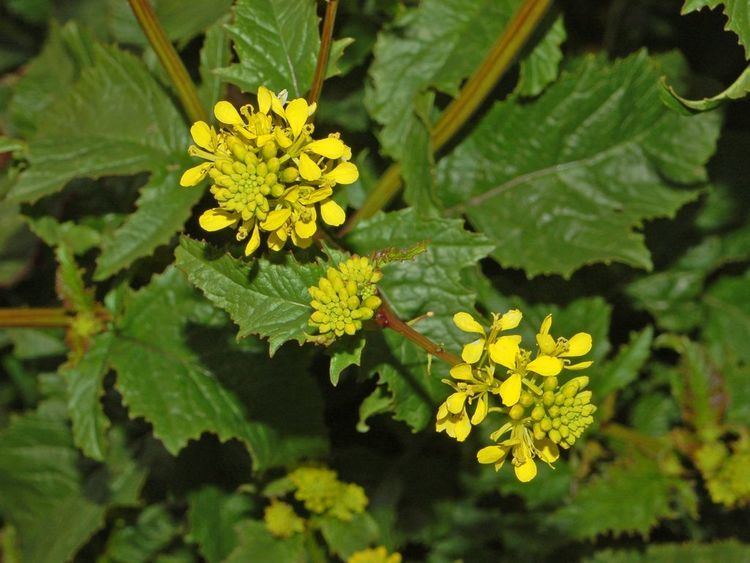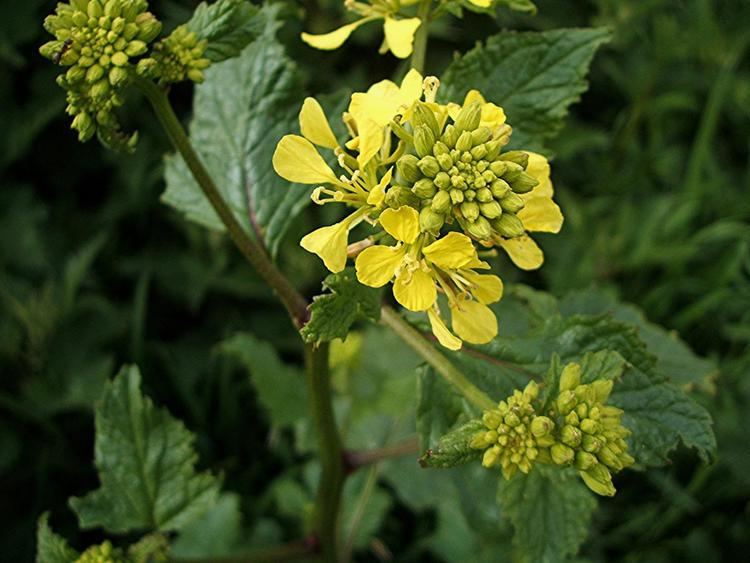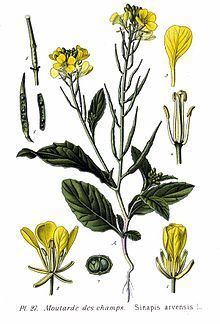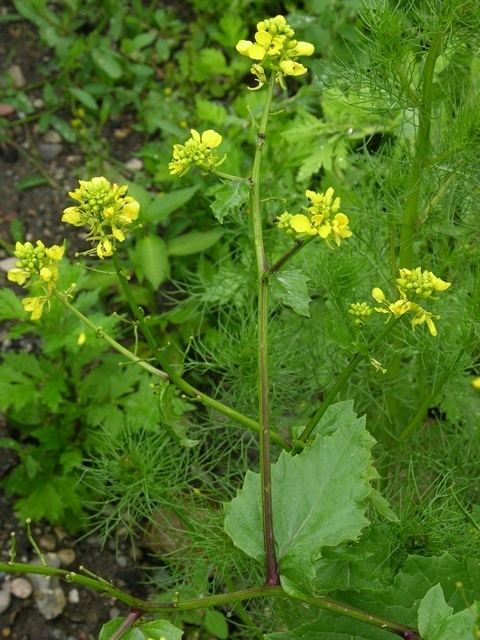Rank Species | ||
 | ||
Similar Mustard, Raphanus raphanistrum, Thlaspi arvense, Cleavers, Common Chickenweed | ||
Field mustard sinapis arvensis 2014 04 26
Sinapis arvensis is an annual or winter annual plant of the genus Sinapis in the family Brassicaceae. It is commonly known as charlock mustard, field mustard, wild mustard or charlock. Pieris rapae, the small white butterfly, and Pieris napi, the green veined white butterfly are significant consumers of charlock during their larval stages.
Contents
- Field mustard sinapis arvensis 2014 04 26
- Etymology
- Description
- Uses
- Distribution
- Habitat
- Varieties
- References

Etymology

The genus name Sinapis derives from the Greek word "sinapi" meaning 'mustard'. The species name arvensis is a Latin adjective meaning 'from/of the field'.
Description

Sinapis arvensis reaches on average 20–80 centimetres (7.9–31.5 in) of height, but under optimal conditions can exceed one metre. The stems are erect, branched and striated, with coarse spreading hairs especially near the base.

The leaves are petiolate with a length of 1–4 centimetres (0.39–1.57 in). The basal leaves are oblong, oval, lanceolate, lyrate, pinnatifid to dentate, 4–18 centimetres (1.6–7.1 in) long, 2–5 centimetres (0.79–1.97 in) wide. The cauline leaves are much reduced and are short petiolate to sessile but not auriculate-clasping.

The inflorescence is a raceme made up of yellow flowers having four petals. The fruit is a silique 3-5 cm long with a beak 1-2 cm long that is flattened-quadrangular. The valves of the silique are glabrous or rarely bristly, three to five nerved. The seeds are smooth 1-1.5 mm in diameter.

Flowering occurs from May to September. The flowers are pollinated by various bees like Andrena agilissima and flies (entomophily). Sinapis arvensis is the host plant of the caterpillars of some Lepidoptera, such as the small white, Pieris rapae. It contains chemicals of the class glucosinolates, including sinalbin.
Uses
The leaves of wild mustard are edible at the juvenile stage of the plant. In animals, except birds, the seeds are toxic and cause gastrointestinal problems, especially if consumed in large quantities. Once the seeds are ground, they produce a kind of mustard.
Distribution
A native of the Mediterranean basin, it is widespread in all temperate regions of the planet. It has also become naturalized throughout much of North America. It is a highly invasive species, a weed, such as in California.
Habitat
It grows in the plains and mountains, in pastures, fields, roadsides, waste places and ruins, but mainly in cultivated places. It prefers calcareous soils in sunny places, at an altitude of 0–1,400 metres (0–4,593 ft) above sea level.
